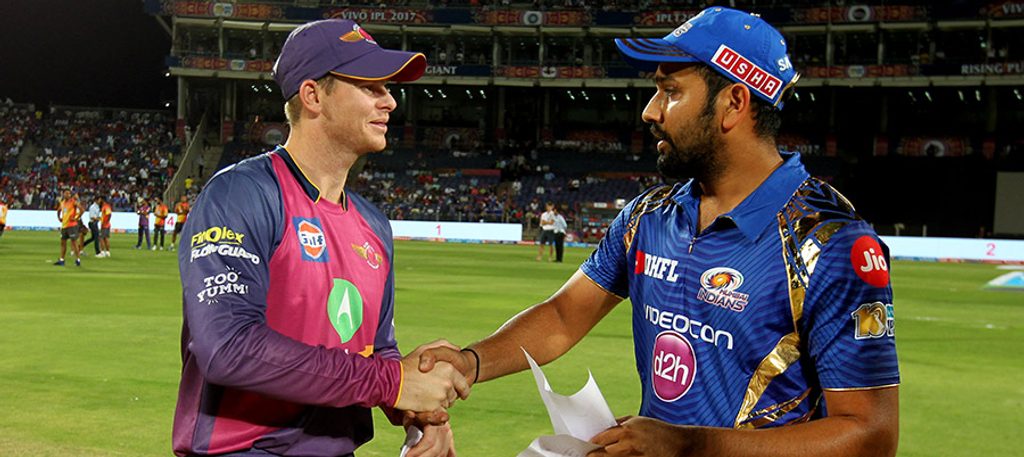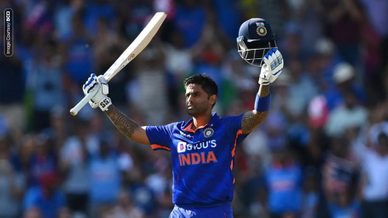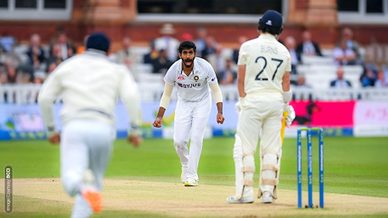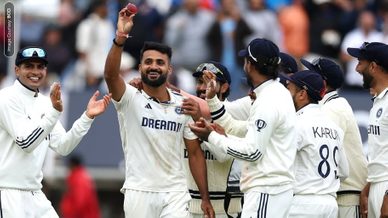
Top 5 India-Australia encounters
There was a time when Australia were more or less invincible in cricket. During that very phase in international cricket, India were in the process of becoming a team that would eventually dominate world cricket. Australia had won a hat-trick of World Cup titles, in 1999, 2003 and 2007. However, it was in 2011 that India broke their streak and became the first team to lift the cup at home. There were a few close encounters before the turn of the century, but in the 21st century, India and Australia have played some grueling contests, most of which have gone down to the wire. Let’s revisit some of the epic ODI encounters between the two powerhouses of world cricket.
India vs Australia, Hyderabad, 2009 (Australia won by 3 runs)
With the ODI series locked in at 2-2, both the teams were itching to take the lead in this 5th ODI. Australia won the toss and skipper Ricky Ponting didn’t hesitate to bat first. Shaun Marsh and Shane Watson laid a near perfect platform. The southpaw was building his innings slowly as Shane Watson batted freely, scoring runs in boundaries at regular intervals. India couldn’t find a breakthrough before their 100-run stand and Shane Watson looked good to get his own century. It wasn’t meant to be though. Watson made the India bowlers pay for almost every error they made. He was in his 90s and tried to slog sweep a Harbhajan delivery over mid-wicket, all he could manage was a big top edge which was taken in the deep. Shaun Marsh though, brought up his century. Handy contributions from the middle order made sure Australia posted a huge total on the board. India had to chase down 350-plus to go ahead in the series.
By his standards, Sachin Tendulkar didn’t have a good series leading up to this game. He knew he needed to be there till the end if India had to chase the total down. India got a decent start but Virender Sehwag couldn’t capitalize & gave away his wicket to Hilfenhaus when he tried to pull a short ball. India lost their way and lost four wickets after that, for less than 100 runs. Tendulkar found an able partner in Suresh Raina and got Team India closer to the target. Slowly, the Master Blaster was scripting a special knock. From fifty to hundred, from hundred to 150, India started to believe they could chase it down. The partnership was broken when Suresh Raina faced a short ball and tried to pull it away. He found the top edge of the bat and the keeper ran behind to collect the ball. Tendulkar had extra responsibilities from here on. India quickly lost Harbhajan, and Sachin started to up the ante. The equation came to India needing 19 runs from 18 balls. It was India’s match to lose from this point. Clint McKay, the Victorian debutant came to bowl the 48th over. Tendulkar, who was on 175, went to clear short fine leg by attempting a paddle scoop. Alas, it went high up in the air and Hauritz took a sitter in that region. It was all over. Ravindra Jadeja ran himself out, Ashish Nehra holed out to long-on, and Praveen was run out in the final over. India fell short by a mere 3 runs.
India vs Australia, Wankhede 2007 (India won by 2 wickets)
It was the final ODI of the 7-match ODI series which was sealed by the Aussies already. India had to salvage some pride and had a chance to reduce the series victory margin. Ricky Ponting won the toss and opted to bat first. India had started off the match in style with a wicket off the very first delivery. Zaheer Khan struck and sent Michael Clarke back to the dressing room for a golden duck. The Aussies were unable to score runs at a good rate as India applied pressure. They somehow got to a decent total near the 20-over mark, but it was Murali Kartik who started to weave his magic in the afternoon sunshine. It was a mesmerising spell of spin bowling and Australia didn’t have any answer to his bowling. The Aussies simply tumbled and Ricky Ponting was running out of partners.
Murali Kartik finished with 6 wickets in the match, the best figures by an Indian bowler against Australia. The visitors only managed 193 on the board. India had a relatively easier target but they got off to a poor start. Australia struck early and kept chipping in with wickets at regular intervals. Mitchell Johnson, Brett Lee and Nathan Bracken made things difficult for India who were reeling at 64/6 at one stage. With the target still more than 100 runs away, Robin Uthappa was battling it out. There was a superb partnership between Uthappa and Harbhajan down the order which took India closer. However, Uthappa got out when the score was 129. The Indian lower order didn’t give up though. Zaheer Khan and Murali Kartik dug in and made sure India crossed the line to end the series on a good note. The hosts chased down the target with just two wickets remaining and it is still one of the closely-fought encounters between India and Australia.
CB Series, second final, Brisbane 2008 (India won by 9 runs)
India had won the first final and Australia had to win this second game to make it to the third one since the winner would be decided from the best-of-three finals. The toss went in India’s favour who opted to bat first. The visitors added 91 runs for the first wicket where Sachin Tendulkar was carrying on from where he left off in the first game. Gautam Gambhir followed Robin Uthappa quickly and India had a job to do once again. Reasonable contributions from the middle order made sure India get to a strong total. Nathan Bracken was letting the ball talk and India were unable to score at brisk pace. India lost a bit of momentum when Sachin Tendulkar got out in his 90s.
Michael Clarke’s late wickets meant India finished on 258 and the Aussies had to chase down a fighting target. India needed early wickets and Praveen Kumar got them the early breakthroughs. Adam Gilchrist, Ricky Ponting and Michael Clarke were out in the first Powerplay and the need of the hour for Australia, was a partnership. Matthew Hayden looked good but the southpaw was run out after his fifty. Later, Michael Hussey and Andrew Symonds added crucial runs. India kept it tight with the ball though and made things difficult for Australia. The hosts lost wickets in a bunch and James Hopes had to fight it out all alone towards the end. S Sreesanth, Irfan Pathan and the destroyer-in-chief Praveen Kumar clicked together as a unit and India started to believe they can script something special. James Hopes was the last man to get out when he played a shot on the up but it went straight to mid-on and India won the match. It was a special moment in India’s cricketing history as MS Dhoni considered it to be greater than the inaugural World T20 which India won.
Coca-Cola Cup Final, Sharjah, 1998 (India won by 6 wickets)
India qualified for the final in Sharjah on the back of a remarkable Tendulkar special, a century that didn’t win them the game, but got them the runs they needed to boost their net run-rate over New Zealand’s. Like that game, Australia batted first in the final as well. Their top order didn’t match its billing, as they were reduced to 85/4 when Gilchrist fell. After Bevan’s departure, it was up to the experienced Steve Waugh and Darren Lehmann who notched up 70 runs each to put up a strong stand that took them past 200. Australia managed to go past 250 and ended up on 272/9 in their allotted 50 overs.
Back in those days, anything over 250 was considered a potentially match-winning total. India knew that they needed to get off to a sound start. The onus to do that fell on Sachin Tendulkar, once again. Sourav Ganguly was dismissed in the 20s, while Nayan Mongia was promoted as a pinch-hitter, at number 3. While he hung in there around Sachin, the master wielded his willow to perfection. Not one of the Australian bowlers was spared, as Tendulkar provided the perfect treat for his fans on his 25th birthday. After Mongia’s dismissal, Tendulkar found a trustworthy partner in skipper, Mohammad Azharuddin. Their century stand took India closer to the target. Tendulkar dominated the bowlers in what is perhaps the best ODI centuries of all time. He was eventually sent back on 134, but it was too late for the Aussies. India achieved the target in the penultimate over of the innings.
1992 World Cup, Brisbane (Australia won by 1 run)
In the same decade as the desert storm, only earlier than that, was another match in the 1992 World Cup that has almost been forgotten. It was probably one of the first big classics between the two teams. Australia were batting first on a Brisbane track that was helpful to fast bowlers. Kapil Dev and Manoj Prabhakar hit the right lines and lengths early on, and the former got a couple of early wickets. Dean Jones cashed in with a fluent 90. With some support from the rest of the middle order, Australia notches up 237 in their 50 overs.
India’s target was revised to 236 due to rain, and they had to get it in 47 overs. India lost Srikkanth very early, as he departed on a duck. Ravi Shastri and skipper, Mohammad Azharuddin steadied the ship. The former saw off the new ball, while the latter punished loose deliveries regularly. India were at par with the required rate right through the chase. After they lost Shastri, Tendulkar and Kapil Dev couldn’t capitalise on their look-in, and got dismissed for 11 and 21 respectively. The big blow came when Azharuddin got run out for 93, with the score on 194. Sanjay Manjrekar didn’t give up, and scored a brisk 42-ball 47. India still look well on course to chase down the target. It was run-outs that led to their doom. India lost their last 5 wickets in desperation to score and run hard, and lost the game by just 1 run.
India-Australia ODIs have been nothing short of exciting and mesmerizing for the fans. The rivalry is quite old, but each battle has something fresh about it. The 5-match ODI series will be held months after India won the Test series, 2-1. The last bilateral ODI series between these two sides was held in Australia, in 2016, and the hosts won it comfortably. India hadn’t played badly at all on that tour. When the Aussies come visiting this time, they will hope to hand a heavy defeat to them on Indian soil.





